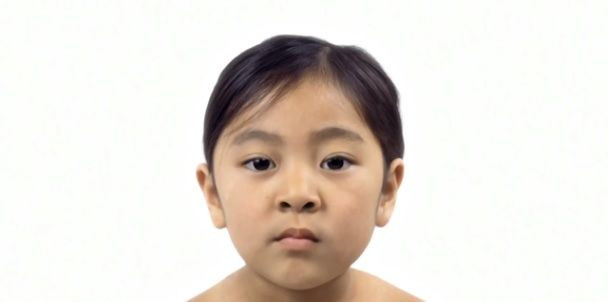Anthony Cerniello Creates Seamless Time Lapse Of Woman’s Entire Life: The Magic Of Change Blindness [VIDEO]

For the majority of your young life, family gatherings were probably fraught with distant relatives commenting on how tall you’d gotten (“Just yesterday you were this high”). To you, nothing had changed. You were still you, the same height you had always been, though now you could reach the top shelf where before you couldn’t. So what happened? The phenomenon is called change blindness, and it’s at the heart of editor and film director Anthony Cerniello’s new time-lapse video, “Danielle.”
The video begins with a girl who is no more than 4 years old. In five minutes’ time, the girl ages well into adulthood and goes gray into her 60s or 70s. Even though her entire life happens in front of you, the progression is invisible. The fluidity of Cerniello’s video creates the effect. Tiny, imperceptible changes form a seamless transition from childhood to adulthood. It’s only once you pause the video and jump between frames — as if leaping between large gaps in time — that the changes become apparent.
Change blindness isn’t simply an opportunity for nostalgia. The psychological phenomenon can reveal much about how people function in daily life and, according to some research, can reflect deep cultural ideology.
At the heart of change blindness is the inability to notice small, peripheral changes in your environment. The brain has huge chunks of data consuming its attention at any given moment, so it does its best to focus on what seems important — usually what can keep it alive or happy. This form of change blindness stems from the brain’s natural inclination to “shine” a light on certain things and ignore others. It’s what makes the Monkey Business Illusion so effective and tests of memory so difficult. More gravely, it’s also a side effect of Alzheimer’s disease and what causes elderly drivers to be more dangerous on the road.
One 2009 study examined the effects of cognitive and memory decline among the elderly and Alzheimer’s patients in their ability to detect changes in natural scenes, all from the point of view of behind a steering wheel. “Part of the motivation for using pictures of natural scenes in CB experiments is that much of human behavior is situational in context and depends on the level of naturalistic detail presented,” the report states.
“Because people with normal vision typically can rely on the ability to rapidly and accurately detect environmental changes, they are able to accomplish feats such as keeping track of a person in a crowd, crossing the street in traffic, or driving safely in traffic even at highway speeds,” the researchers wrote, ultimately finding age correlates positively with greater change blindness.
“Despite normal vision, we sometimes fail to notice even very conspicuous changes.”
These conspicuous changes are so fleeting largely because human vision doesn’t occur in one continuous stream. People see the world in quick, choppy glances called “saccades.” To better understand the process, look at one corner at the top of your screen, then quickly look at the opposite corner. In the time between averting your gaze, you were effectively blind. Even if you were to slowly track your gaze across the top of the screen, guiding your sight the whole way, your visual system would still be operating in short bursts.
Researchers suggest it’s within these thin slices of blindness that the changes are lost. Trying to track Danielle’s aging process in real-time is difficult because, while the eye is a finely tuned receptor, it has its limits. Observing the physical world, wholly, in real-time, would require a visual system that takes no breaks to send information to the brain.
You may watch Danielle grow from doe-eyed toddler to wizened elder in a matter of minutes, but she never seems to change — just as you may gaze at yourself in the mirror each morning over the period of decades, growing but never noticing, looking but never seeing.



























